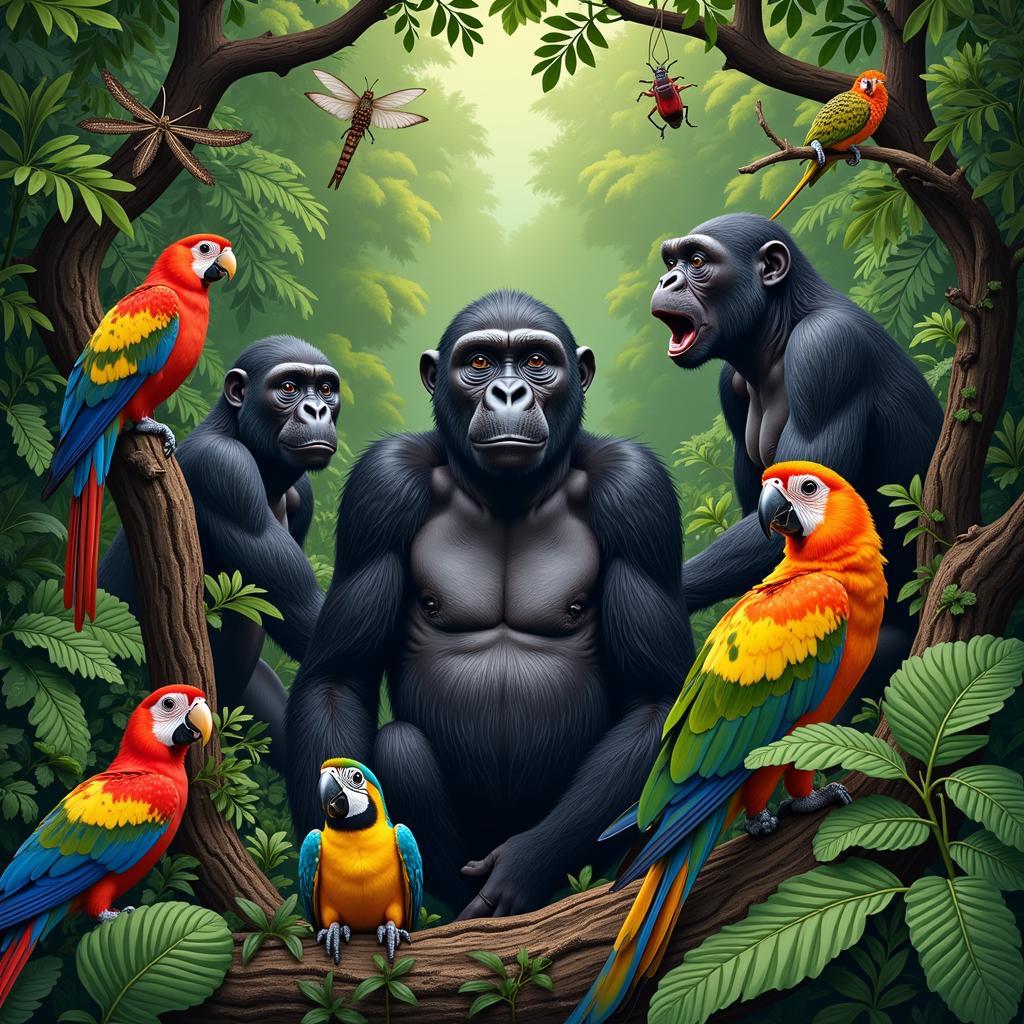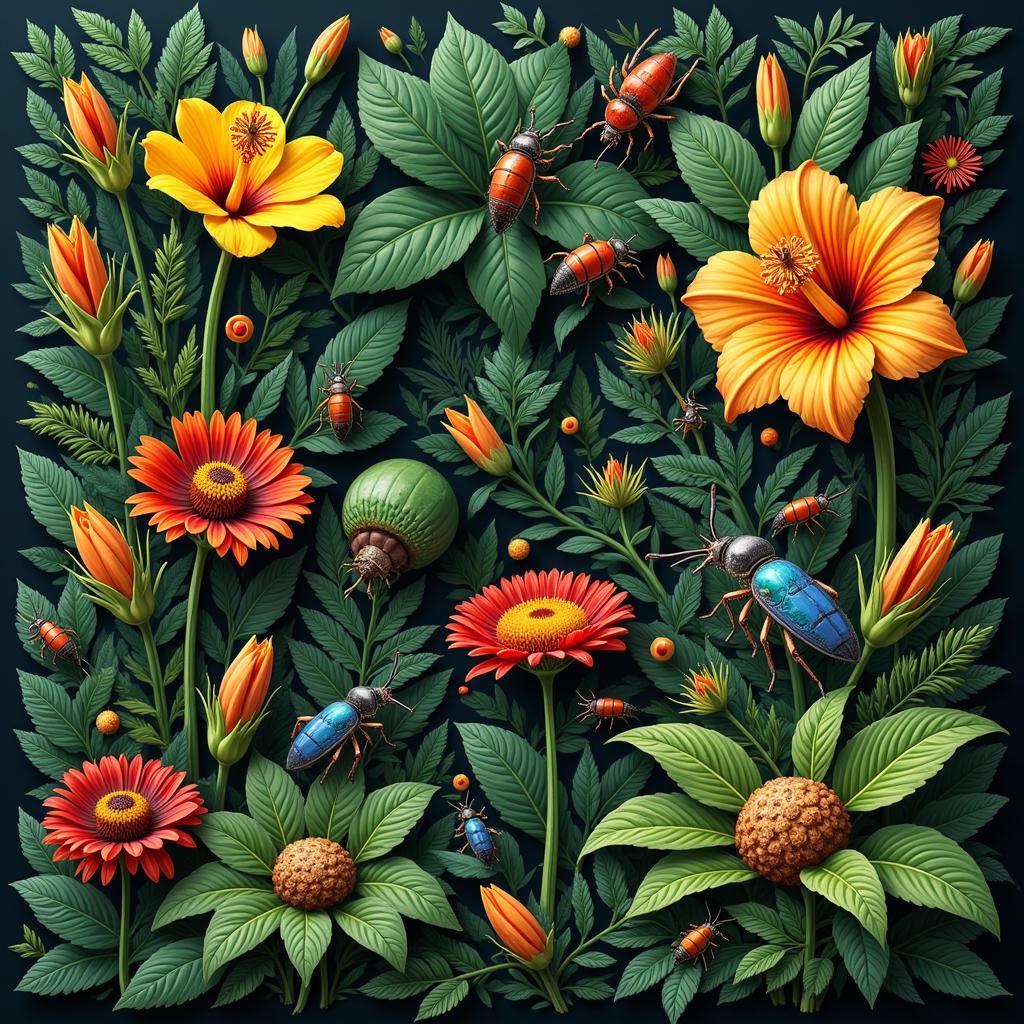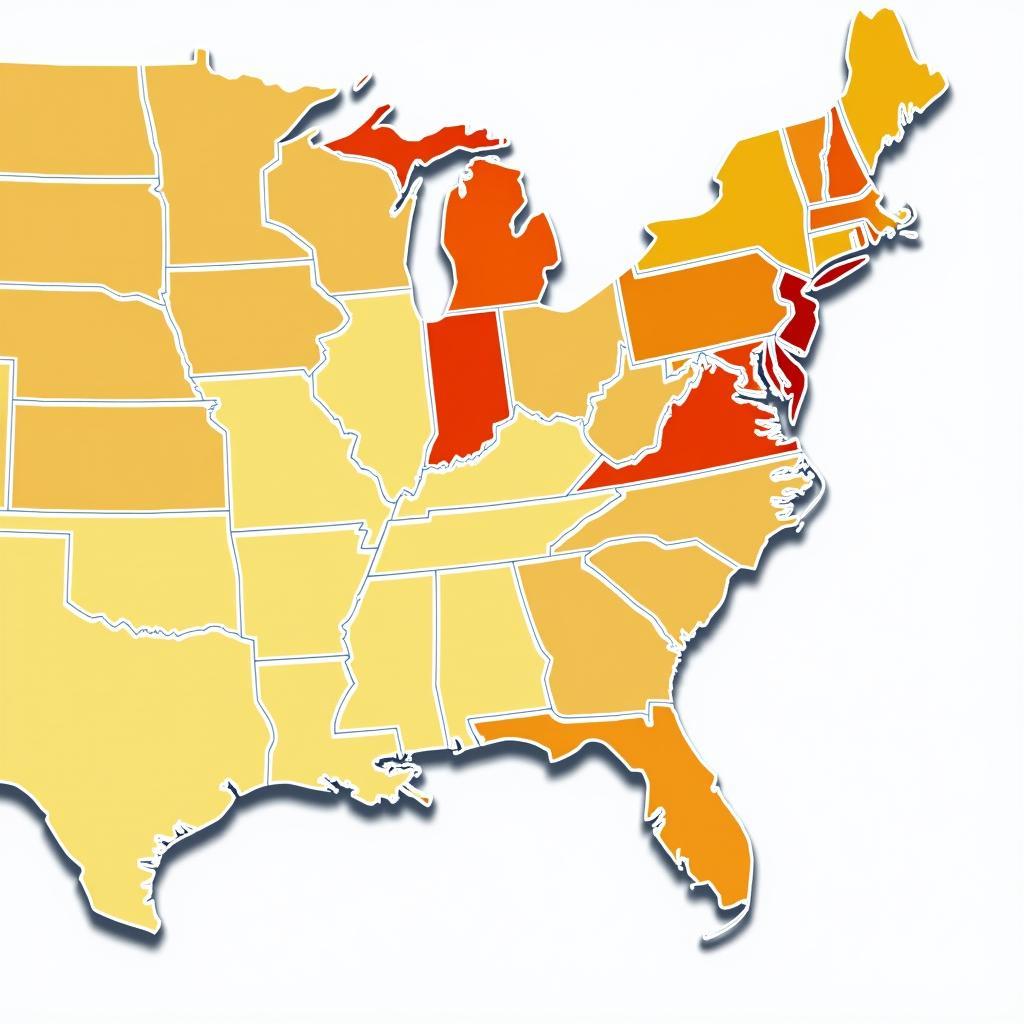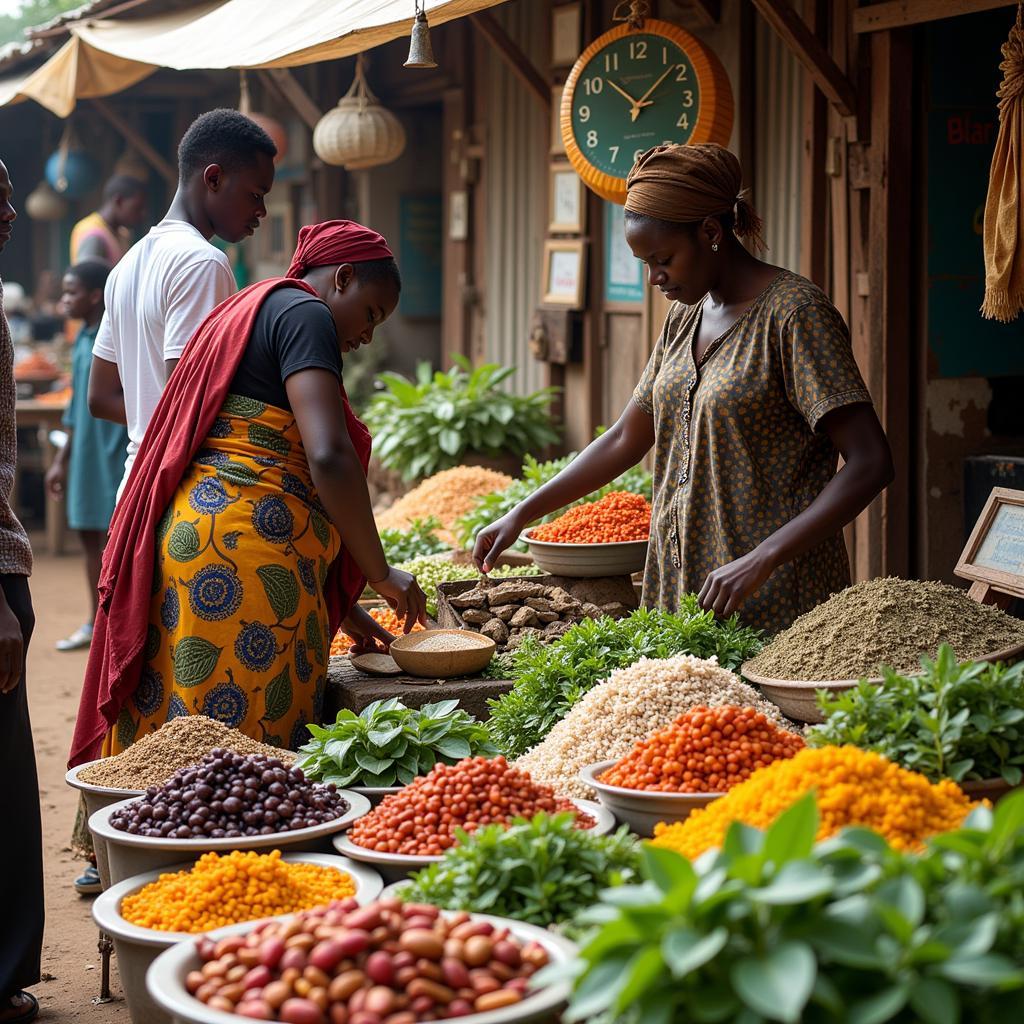Exploring African Deep Jungle Life
African Deep Jungle Life, a realm of vibrant biodiversity and ancient traditions, beckons the adventurous and curious. From the dense rainforests of the Congo Basin to the mountainous jungles of East Africa, this article delves into the captivating world of the creatures, cultures, and challenges that define life within these emerald depths. We’ll uncover the secrets of survival, the intricate web of life, and the human stories intertwined with this unique ecosystem.
 Diverse wildlife in the African deep jungle
Diverse wildlife in the African deep jungle
Unveiling the Secrets of the African Deep Jungle
The African deep jungle, a world shrouded in mystery and teeming with life, presents a fascinating study in adaptation and survival. The dense canopy creates a unique microclimate, influencing the flora and fauna that thrive below. Here, the interplay of sunlight, humidity, and rainfall shapes the very fabric of existence. Animals have developed unique camouflage techniques, like the okapi’s striped hindquarters, allowing them to blend seamlessly into the dappled light and shadow. Specialized diets, such as the gorilla’s reliance on vegetation, also play a crucial role in their survival. Let’s explore the rhythmic pulse of the african jungle drum which echoes through the jungle, a testament to the rich cultural heritage found within.
The Biodiversity Hotspot: Flora and Fauna
The African deep jungle is a biodiversity hotspot. From towering trees draped with lianas to the smallest insects hidden within the leaf litter, life flourishes in every corner. These jungles are home to endangered species like the mountain gorilla and the bonobo, as well as a stunning array of birds, reptiles, and amphibians. The forest floor, a tapestry of decaying leaves and vibrant fungi, supports an intricate network of decomposers, vital to the health of the entire ecosystem.
 Close-up of plants and insects in the African jungle
Close-up of plants and insects in the African jungle
Human Interaction with the African Deep Jungle
For centuries, humans have coexisted with the African deep jungle, their lives inextricably linked to its resources and rhythms. Indigenous communities, like the Pygmies of the Congo Basin, have developed a deep understanding of the forest, utilizing its bounty for sustenance, medicine, and spiritual practices. Their traditional knowledge, passed down through generations, highlights the importance of sustainable living and respect for the delicate balance of nature. However, the increasing pressures of deforestation, poaching, and resource extraction pose significant threats to both the jungle ecosystem and the cultures that depend on it.
Challenges and Conservation Efforts
The african child fish represents the resourcefulness and connection to nature that is vital for survival in these environments. The African deep jungle faces immense challenges in the 21st century. Deforestation, driven by logging, agriculture, and mining, fragments habitats and threatens biodiversity. Poaching decimates wildlife populations, pushing endangered species closer to extinction. Climate change also presents a looming threat, altering rainfall patterns and increasing the risk of wildfires. However, dedicated conservation efforts are underway, working to protect these vital ecosystems and empower local communities to become stewards of the forest.
What is the Significance of the African Deep Jungle?
The African deep jungle plays a crucial role in global climate regulation, absorbing vast amounts of carbon dioxide and releasing oxygen. Its biodiversity is a treasure trove of potential medicines and scientific discoveries. Furthermore, the cultural heritage of the communities living within these forests is an invaluable part of human history.
Conclusion
African deep jungle life is a tapestry of interwoven wonders, a testament to the power of adaptation, resilience, and the intricate dance between humans and nature. Protecting these irreplaceable ecosystems is not just a conservation imperative, but a responsibility to future generations. Let’s continue to explore, understand, and safeguard the magic of the African deep jungle.
FAQ
- What are some of the most endangered animals in the African deep jungle? Mountain gorillas, bonobos, okapis, and forest elephants are some of the most endangered species.
- How do indigenous communities utilize the resources of the jungle? They rely on the forest for food, medicine, building materials, and spiritual practices.
- What are the biggest threats to the African deep jungle? Deforestation, poaching, and climate change are the most significant threats.
- What is being done to protect the jungle? Conservation organizations are working to establish protected areas, combat poaching, and promote sustainable development.
- Why is the African deep jungle important? It plays a vital role in climate regulation, biodiversity conservation, and cultural preservation.
Situations with Frequent Questions
- Planning a trip to an African jungle: Tourists often inquire about safety precautions, visa requirements, recommended vaccinations, and ethical tourism practices.
- Researching African wildlife: Students and researchers frequently seek information on specific animal species, their habitats, conservation status, and the impact of human activities.
- Supporting conservation efforts: Individuals interested in contributing to jungle preservation often ask about reputable organizations, donation opportunities, and volunteer programs.
Suggested Further Reading
- African green pigeon call – Learn more about the unique sounds of the jungle.
- 10 flags of african continent – Explore the diverse nations surrounding these jungles.
- African big cats images – Discover the majestic predators of Africa.
Need assistance? Contact us 24/7: Phone: +255768904061, Email: kaka.mag@gmail.com, or visit us at Mbarali DC Mawindi, Kangaga, Tanzania.


